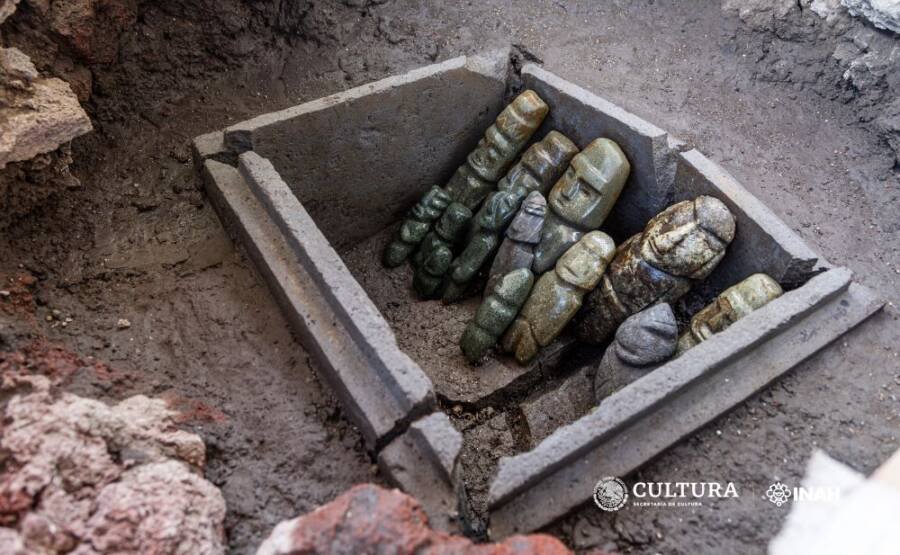A Frozen Time Capsule Emerges from the Ice
Imagine this: amidst the breathtaking vistas of Norway’s Jotunheimen Mountains, a seemingly unassuming patch of ice surrenders a treasure trove from the distant past. This isn’t your typical archaeological find; it’s a journey 1,500 years back in time, courtesy of a remarkably preserved arrow dating back to the 6th century AD – even predating the formidable Vikings!
This isn’t just an arrow; it’s a silent sentinel, whispering tales of a bygone era. Crafted from pine with an intact iron arrowhead, it paints a vivid picture of pre-Viking life and hunting practices. The missing fletching, the remnants of sinew and tar, each detail speaks volumes about its journey through time.

Melting Glaciers, Revealing Treasures
Climate change, often demonized for its destructive force, has in this instance become an unlikely guardian of history. The relentless melting of ice patches in Norway is transforming them into “treasure glaciers,” unearthing a wealth of artifacts frozen in time. These silent witnesses, once trapped in a prehistoric deep freeze, are now emerging, offering invaluable insights into our past.
The 1,500-year-old arrow isn’t alone. A second arrow, slightly younger from the 9th century AD (Viking era), was also discovered nearby. While not as pristine as its older counterpart, it bears the telltale mark of the Vikings – birch bark looped around the shaft, a unique technique employed by these legendary raiders and explorers.

A Tale of Two Arrows: A Glimpse into Pre-Viking and Viking Life
The older arrow, meticulously crafted from pine and iron, hints at the skill and resourcefulness of pre-Viking communities. Its discovery at a high-altitude reindeer hunting site paints a vivid picture of their subsistence strategies. Reindeer, seeking refuge from pesky botflies on the icy slopes, became targets for these skilled hunters. The arrow, lost in the snow millennia ago, lay frozen in time, waiting to be rediscovered.
The Viking arrow, with its distinct birch bark binding, whispers of a different era. These daring seafarers, renowned for their raids and explorations, left their mark on this seemingly remote mountain range. The arrow, perhaps lost during a hunt or a skirmish, speaks of their presence and the unique technological advancements that defined their culture.

Beyond the Arrows: A Broader Picture of the Past
These arrows are merely the tip of the iceberg. Alongside them, archaeologists have unearthed animal bones, antlers, and even “scaring sticks” – ingenious tools used to lure and hunt reindeer. Each artifact adds another brushstroke to the canvas of our understanding of this remote corner of the world and the lives that unfolded there centuries ago.

The Vikings: From Raiders to Explorers
While the pre-Viking arrow takes center stage, the Viking-era discovery deserves its own spotlight. The Viking Age, spanning roughly 700 to 1100 AD, was a period of immense dynamism and cultural influence. These skilled seafarers, often portrayed as fearsome raiders, were also adept traders, explorers, and colonizers. Their longboats, synonymous with plunder and conquest, also carried them to distant lands, forging new connections and leaving an indelible mark on history.

A Legacy Etched in Ice
The discovery of these arrows is a testament to the power of preservation. The unforgiving ice, once a barrier to the past, has become a guardian, protecting these relics for millennia. As the glaciers continue to melt, more secrets may be revealed, offering us a glimpse into the lives and cultures that shaped our world.
This story is not just about two arrows or the Vikings; it’s about the resilience of human history, the power of scientific discovery, and the ever-evolving relationship between humanity and the environment. In the melting ice of Norway, we find not just artifacts, but stories waiting to be told, lessons to be learned, and a deeper understanding of the human journey through time.

Source Article:
- 1,500-year-old pre-Viking arrow is found in an ‘awesome’ state of preservation – as rapidly melting ice reveals contents of Norway’s ‘treasure glaciers’: https://www.history.com/topics/exploration/vikings-history
Let the arrows be our guides, leading us back in time to a world both familiar and strange, reminding us that even the most unassuming corners of our planet hold stories waiting to be unearthed.







2 thoughts on “Ice Melts, History Emerges: Unveiling 1,500-Year-Old Arrow and Secrets of Pre-Viking Life”
Im very curious, where were the found in reference to Snertingdal, Innlandent fylke? I have family in these areas. I we find more about our ancestry, this is one area that falls into our geographical search. Please share more information. Thank you.
Thank you for your sharing. I am worried that I lack creative ideas. It is your article that makes me full of hope. Thank you. But, I have a question, can you help me?